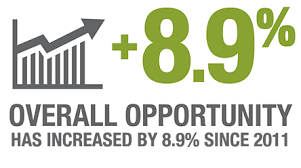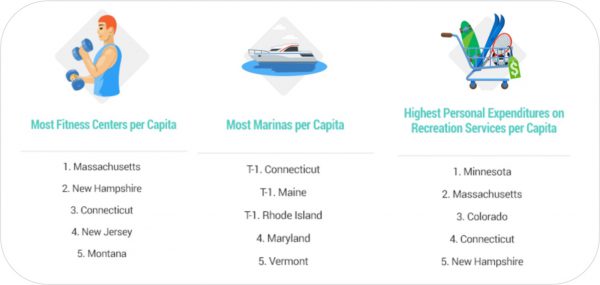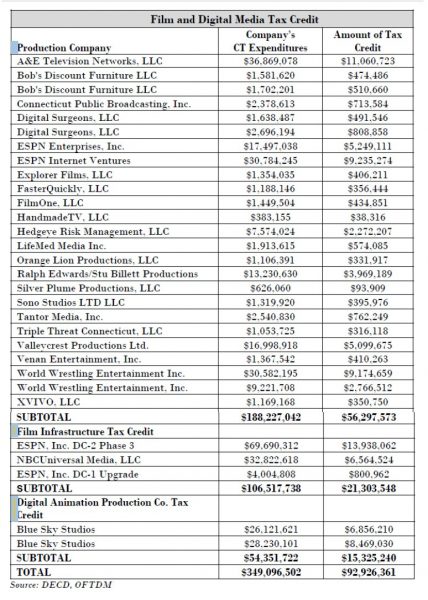CT Ranked #4 in US in Education, Economic, Civic Opportunity
/Including Connecticut, ranked #4 nationally, the New England states grabbed five of the top 10 slots in the Opportunity Index, an analysis of “how opportunities measure up” in communities across the country. The Opportunity Index is an annual composite measure at the state and county levels of economic, educational and civic factors that expand opportunity.
Leading the opportunity rankings are Vermont, Massachusetts, New Hampshire, Connecticut, New Jersey, Maryland, North Dakota, Nebraska, Maine and Minnesota. Connecticut exceeded the national average in all three components – Jobs and Local Economy, Education, and Community Health and Civic Life.
and Minnesota. Connecticut exceeded the national average in all three components – Jobs and Local Economy, Education, and Community Health and Civic Life.
In the Education component of the Opportunity Index, Connecticut ranked second. The state ranked sixth in the Community aspect of the index, but 20th in the Economy scorecard. The Economy rankings included data on jobs, wages, poverty, inequality, access to banking, affordable housing and internet access.
Connecticut’s overall score was 62.8, compared with the national average of 54.0. Among Connecticut’s eight counties, the best overall opportunities are in Middlesex County, which earned a 63.1 score. Next were Tolland County, 62.3; Fairfield County,62.1; Litchfield County, 60.6; Hartford County 59.5; New Haven County, 56.8; New London County, 54.3; and Windham County 51.2.
The index was jointly developed by Measure of America and Opportunity Nation.
Nationally, overall opportunity has increased by 8.9 percent since 2011, as unemployment has dropped and violent crime has been reduced, the data indicated. In addition, the rate of young adults from age 16 to 24 who are neither working nor in school has fallen 9.1% since 2011, but remains above pre-recession levels. This number has decreased slightly since 2015.
Opportunity Nation is a bipartisan, national coalition of more than 350 businesses, nonprofits, educational institutions and community leaders working to expand economic opportunity. Opportunity Nation seeks to close the opportunity gap by amplifying the work of its coalition members, advocating policy and private sector actions and releasing the annual Opportunity Index. Measure of America provides easy-to-use yet methodologically sound tools for understanding well-being and opportunity in America.
The data, according to survey sponsors, comes from the U.S. Census Bureau, the Bureau of Labor and Statistics, the Federal Communications Commission, the National Center for Education Statistics, the Center for Disease Control and Prevention and the U.S. Department of Justice.
Prevention and the U.S. Department of Justice.







 Nearly two-thirds of those surveyed in Connecticut (64%) called for “using technology to enhance the way students learn in the classroom” – the highest percentage among the six New England states. A majority called for “more significant efforts to close achievement gaps” (59%), more effective teachers (62%) and changes to the ways schools are funded (57%). The state legislature in Connecticut is currently considering changes in the school funding formula proposed by Gov. Malloy in the wake of a state court decision.
Nearly two-thirds of those surveyed in Connecticut (64%) called for “using technology to enhance the way students learn in the classroom” – the highest percentage among the six New England states. A majority called for “more significant efforts to close achievement gaps” (59%), more effective teachers (62%) and changes to the ways schools are funded (57%). The state legislature in Connecticut is currently considering changes in the school funding formula proposed by Gov. Malloy in the wake of a state court decision.

 The overall rankings were weighted 80-20 between Entertainment & Recreation and Nightlife. The Entertainment & Recreation categories included restaurants, beaches, movie theaters, national parks, arts venues, and state spending on parks and recreation. The nightlife category included average beer & wine prices, movie costs, music festivals and access to bars.
The overall rankings were weighted 80-20 between Entertainment & Recreation and Nightlife. The Entertainment & Recreation categories included restaurants, beaches, movie theaters, national parks, arts venues, and state spending on parks and recreation. The nightlife category included average beer & wine prices, movie costs, music festivals and access to bars.




 aphy”.
aphy”.


 The Office “actively assists local, national and international motion picture, TV and media production entities with finding locations in Connecticut, rules and procedures, securing permits, hiring local cast and crew and other services,” according to the agency’s website. In addition, the Office “represents the state and its agencies, municipalities and resident media professionals in interactions with media production entities and the industry at large.”
The Office “actively assists local, national and international motion picture, TV and media production entities with finding locations in Connecticut, rules and procedures, securing permits, hiring local cast and crew and other services,” according to the agency’s website. In addition, the Office “represents the state and its agencies, municipalities and resident media professionals in interactions with media production entities and the industry at large.” venue in the city. Ralph Edwards/Stu Billett Productions received nearly $4 million in tax credits in fiscal year 2016, spending just over $13 million in the state on a number of prominent program productions.
venue in the city. Ralph Edwards/Stu Billett Productions received nearly $4 million in tax credits in fiscal year 2016, spending just over $13 million in the state on a number of prominent program productions.






























